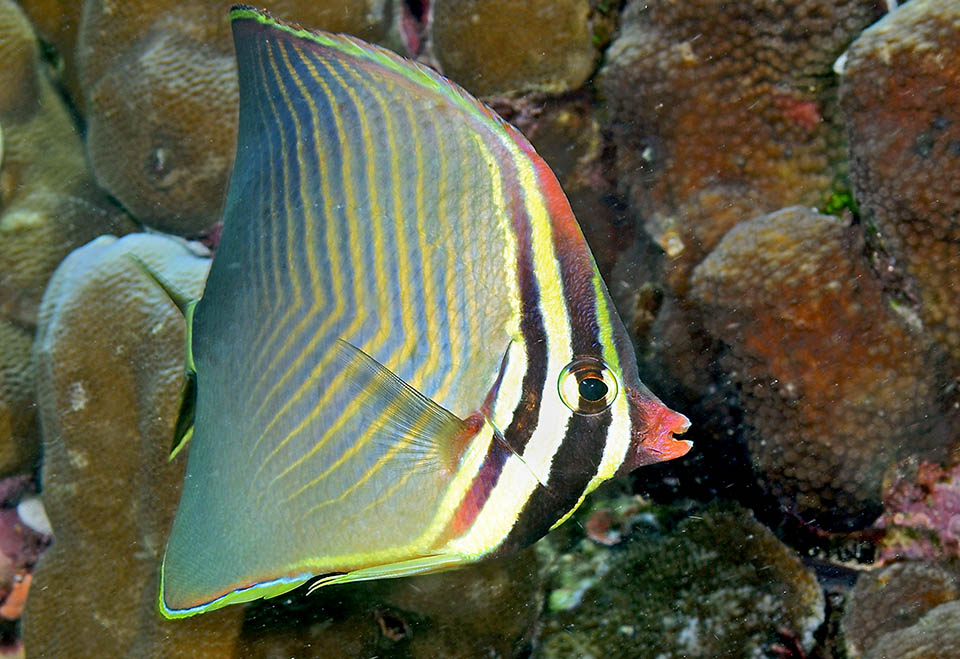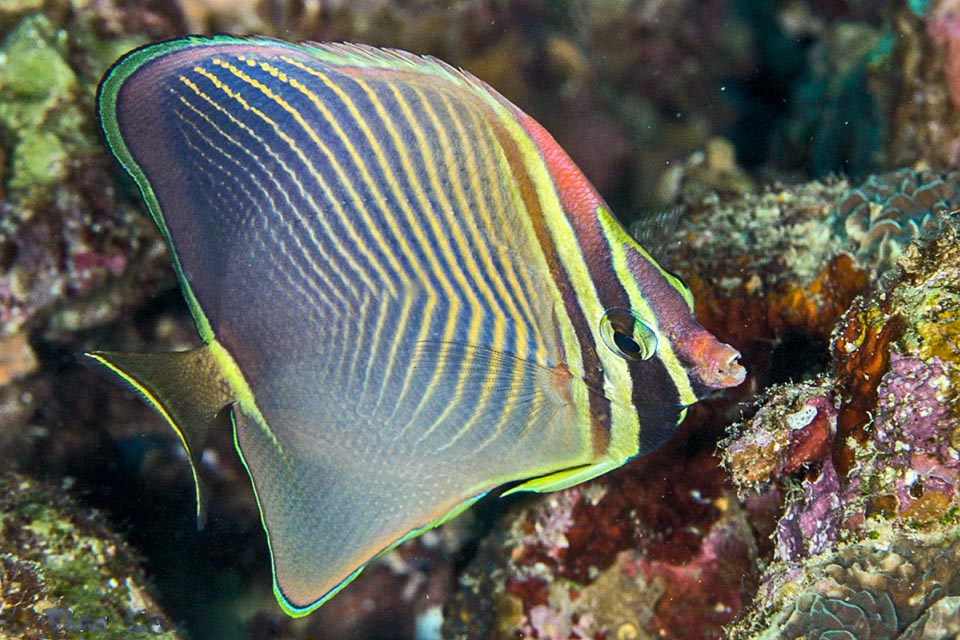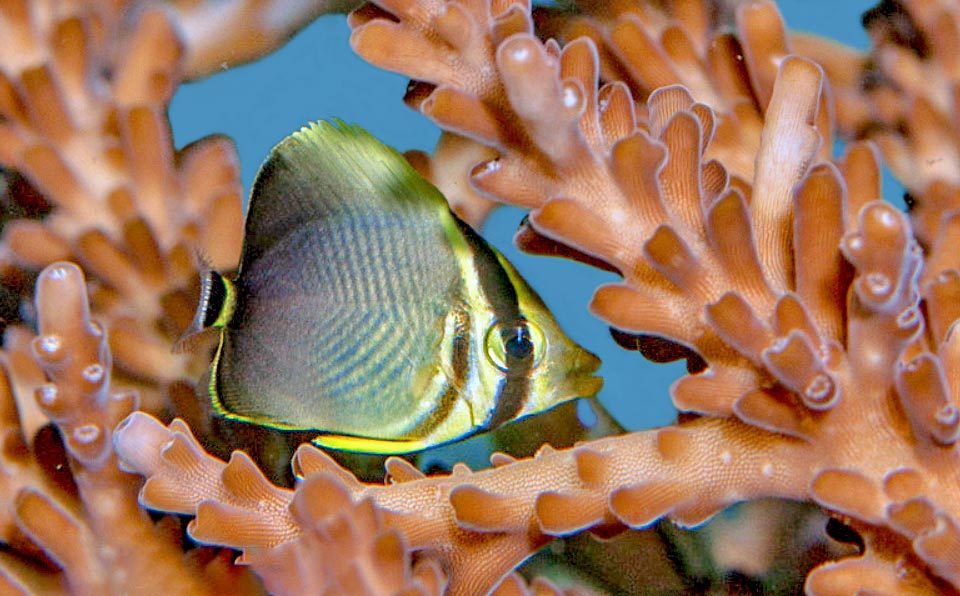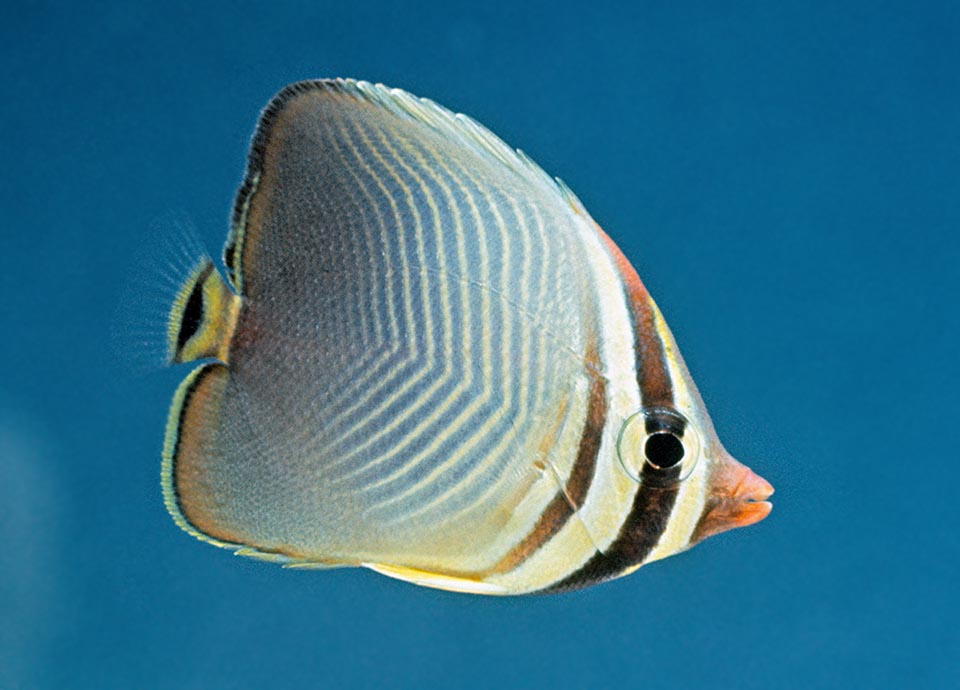Family : Chaetodontidae

Text © Giuseppe Mazza

English translation by Mario Beltramini

Chaetodon triangulum is present in the Indian Ocean tropical waters and in a relatively modest area of western Pacific © Benoit Lallement
The Triangle butterflyfish (Chaetodon triangulum Cuvier, 1831) belongs to the class of Actinopterygii, the ray-finned fishes, to the order of Perciformes and to the family of Chaetodontidae.
The name of the genus Chaetodon comes from the Greek “χαίτη” (khaite) = hair and “ὀδούς” (odous) = tooth, due to the “bristle-shaped teeth”. The name of the species triangulum = triangle in Latin, refers to the triangular pattern of the angled parallel brackets which do characterize its livery.
Zoogeography
It is present in the tropical waters of the Indian Ocean and in a fairly modest area of the western Pacific.

16 cm long at most, it lives not under the 25 m of depth sheltered by the madreporic formations, eating polyps of various species © Tim Cameron
As an indication, we find it along the entire eastern African coast, from South Africa to the Red Sea and the Arabic Sea, in Madagascar, in the Seychelles, the Andaman, in Thailand, Singapore, Indonesia and Taiwan.
Ecology-Habitat
It lives in the madreporic formations up to 25 m of depth.
Morpho-physiology
The triangle butterflyfish reaches, at most, the 16 cm. The body is flat, more or less triangular when the fins are spread. The snout is elongated in order to tear off the polyps of the madrepores.

Young hidden among corals. The resilience of the species is good with a possible doubling of the populations in less than 15 months © Tim Cameron
The dorsal fin has 11 spiny rays and 23-26 soft; the anal has 3 spiny rays and 20-21 soft; the ventral and the pectoral ones are unarmed and the caudal fin is more or less blunt.
The snout is reddish, as in the Chaetodon larvatus to whom, anyway, it resembles, but here the eye is masked by a dark band, followed by another band, smaller, and the typical drawing of bluish parallel angled brackets, on the general pale yellow background.
The rear part of the body is darker and the patterns merge. Also the tail before the translucent zone, has a vertical black band, surrounded by yellow, more visible in the adults thus to confuse, by simulating a fake head, the predators.
Ethology-Reproductive Biology

This specimen, larger, now looks very similar to the adults. Chaetodon triangulum is not an endangered species © Giuseppe Mazza
It mainly lives in shallow waters, between the madrepores rich of ramifications and caches such as those of the genus Acropora, nourishing mostly of their polyps, even if other cnidarians belong to its diet. During the reproductive period, pairs do take form, and after having abandoned the eggs to the currents often then keep staying together.
The populations may double in less than 15 months, and the fishing vulnerability index of the species is presently very low: just 10 on a scale of 100. Furthermore, they are not required by the aquaria lovers because, seen their particular diet, when at home they might rapidly pass away for starvation.
Synonyms
Gonochaetodon triangulum Cuvier, 1831.
→ For general information about FISH please click here.
→ For general information about BONY FISH please click here
→ For general information about CARTILAGINOUS FISH please click here.
→ To appreciate the BIODIVERSITY of BONY FISH please click here.
→ To appreciate the BIODIVERSITY of CARTILAGINOUS FISH please click here.
